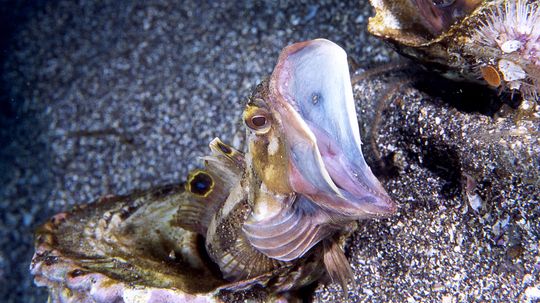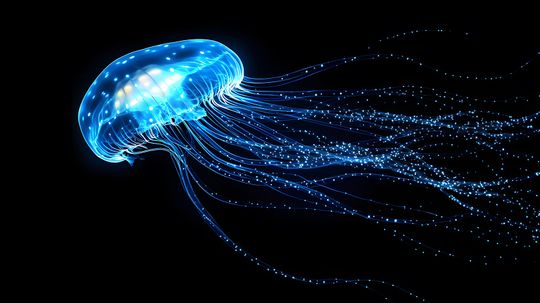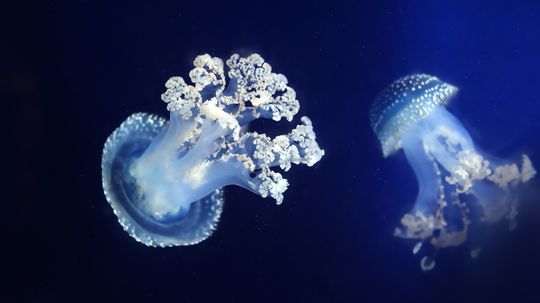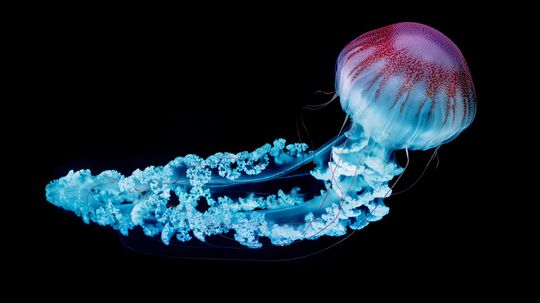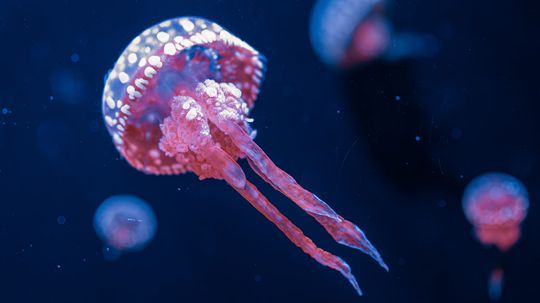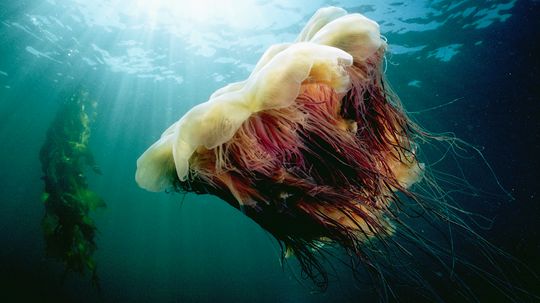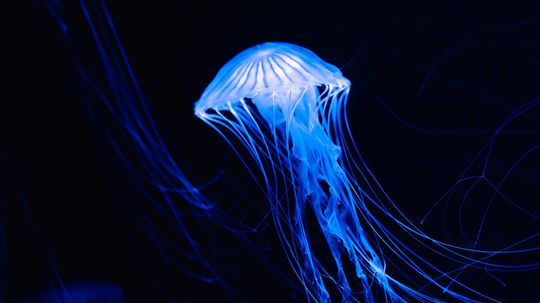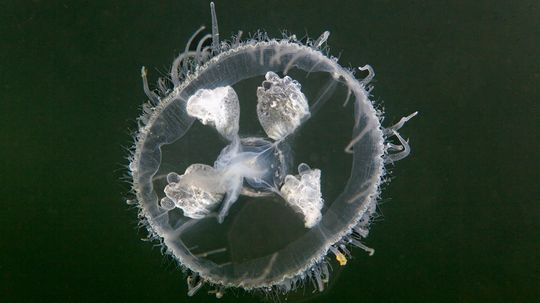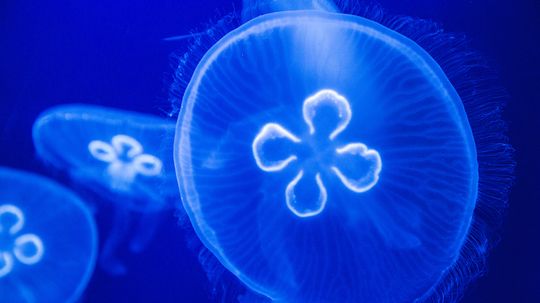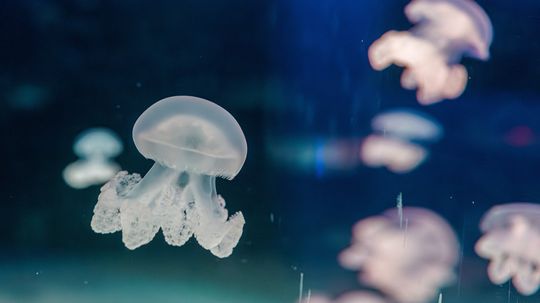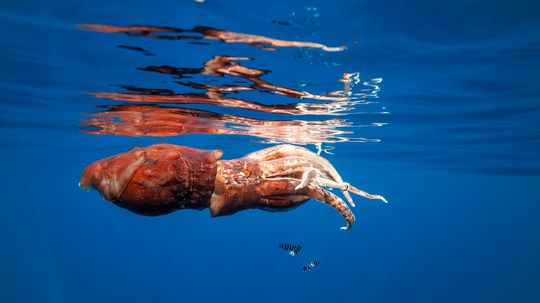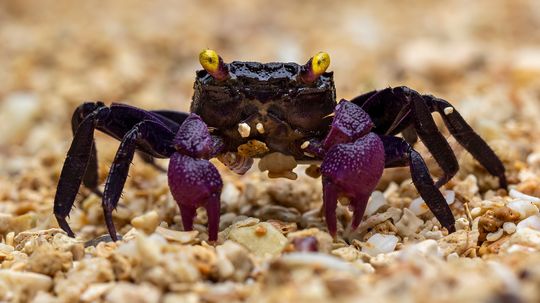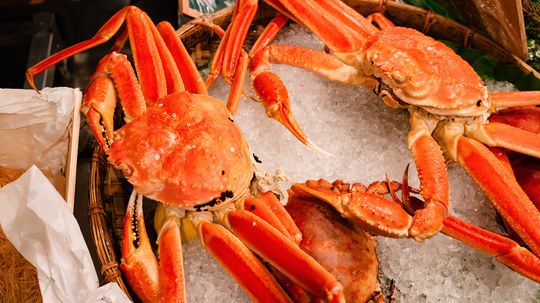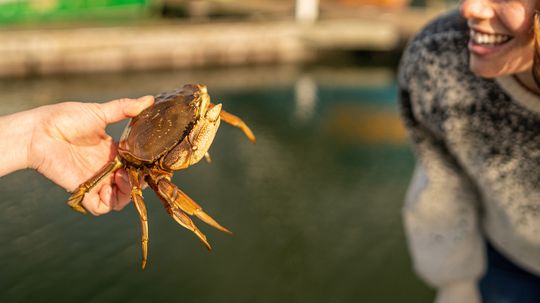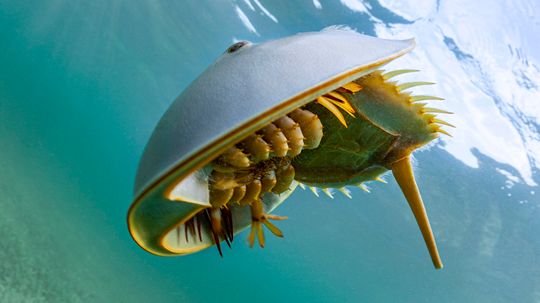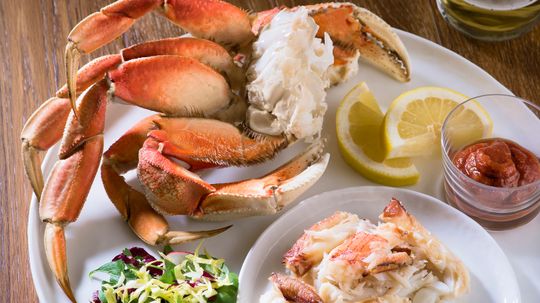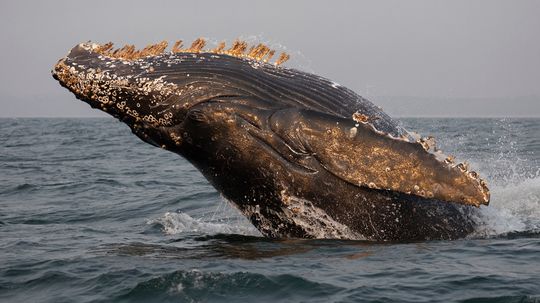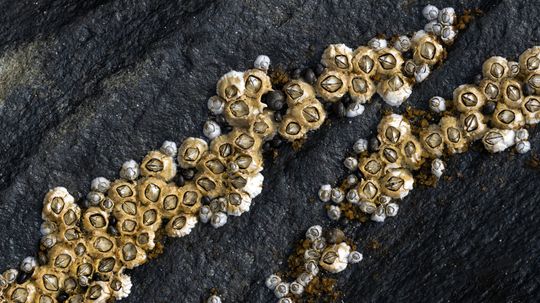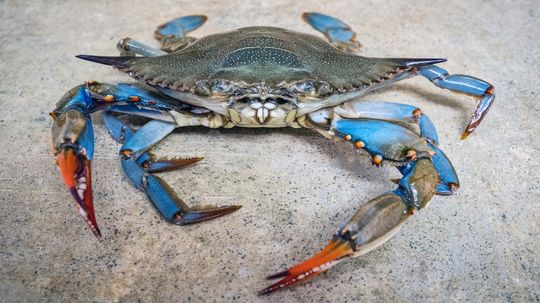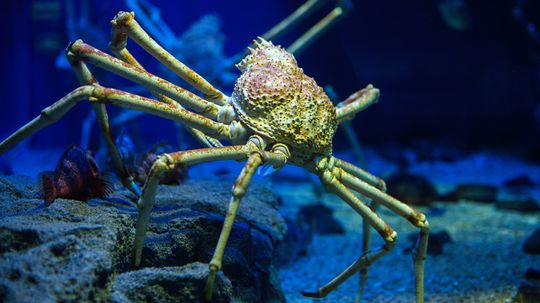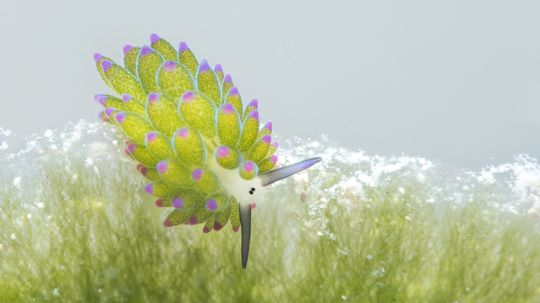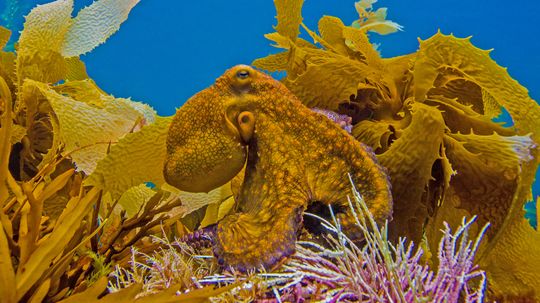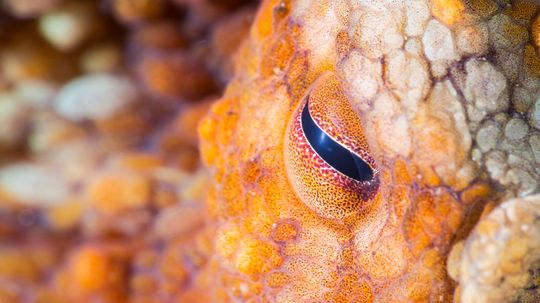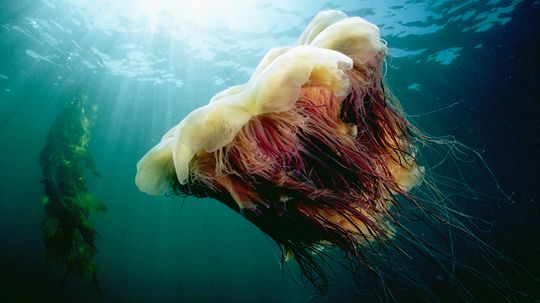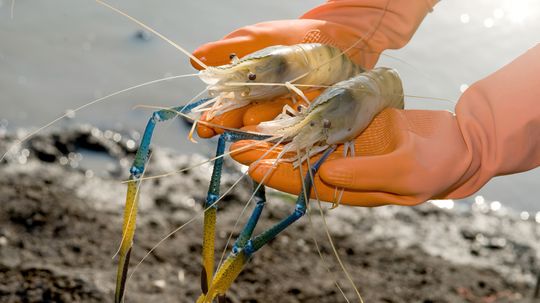Marine Life
Marine life includes an incredible and vibrant array of wild animals that live in the ocean. From tiny phytoplankton to massive blue whales, marine life is a vital source of food, energy and life for the entire planet.
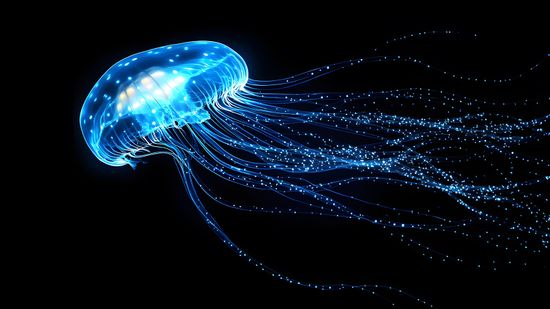
How Bioluminescent Jellyfish Get Their Signature Glow
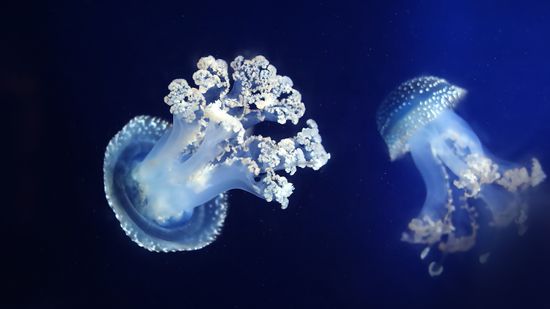
White Spotted Jellyfish: Cute Until They Become Invasive
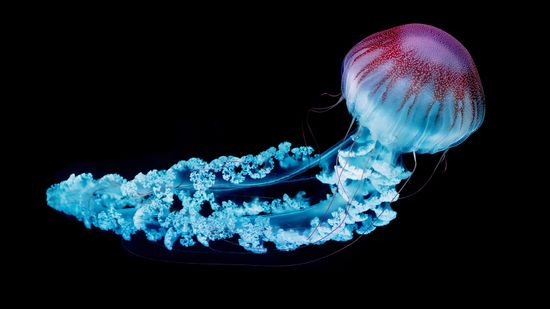
Deep Sea Jellyfish Have 30-foot-long Tentacles
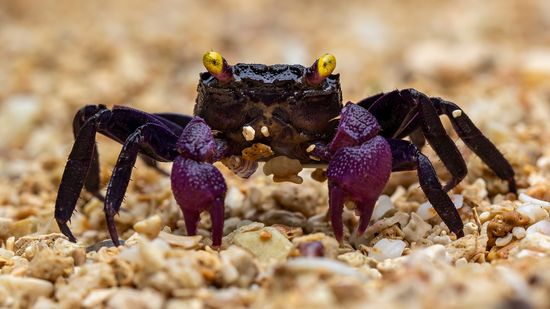
Vampire Crab: More Cartoonish Than Blood-sucking
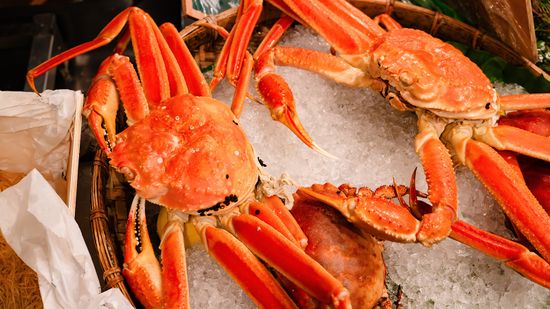
Snow Crab: A High-protein Delight Thriving in Cold Waters
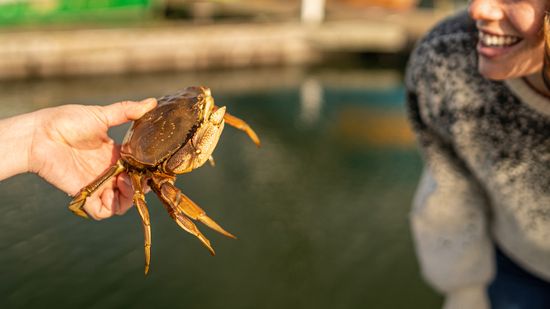
Dungeness Crab: A Deliciously Sustainable Crustacean
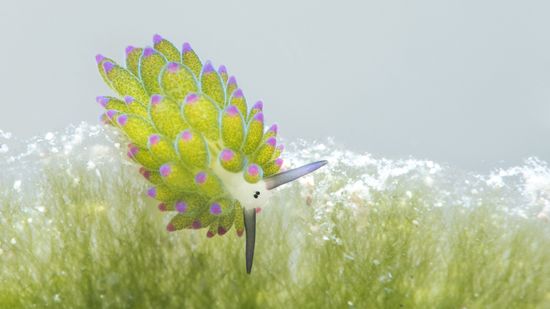
No, the Leaf Sheep Sea Slug Is Not an AI Hallucination

An Ocean Quahog Shows Its Age Like Rings on a Tree
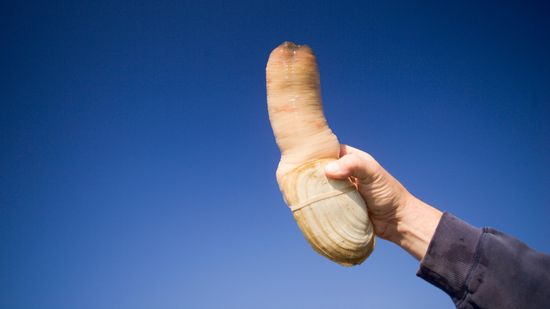
Geoduck Looks NSFW but Is Prized for Its Flavor

Colossal Squid vs. Giant Squid: There's a Massive Difference
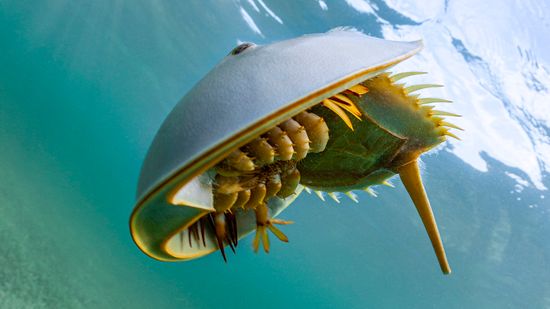
Horseshoe Crab Looks Like an Alien, If We're Being Honest
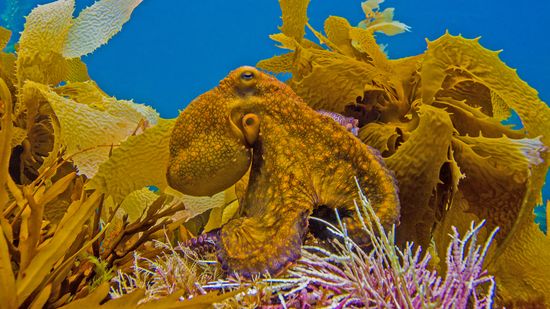
There Are 300 Types of Octopus Species, Some With Internal Shells
Learn More
The ocean is full of beauty, but it also hides some of the scariest sea creatures on the planet. Many of these animals lurk far below the ocean's surface, in the dark, high-pressure world of the deep sea.
By Nico Avelle
In the deep ocean where sunlight fades to black, a strange glow pulses through the water.
By Nico Avelle
You’ve probably seen them in aquarium tanks or floating just offshore—those milky, gelatinous blobs with polka dots and long, frilly arms. Meet the white spotted jellyfish (Phyllorhiza punctata), a tropical jellyfish invader that's turning up far from home.
Advertisement
In the deepest, darkest parts of the ocean, far below where visible light can reach, swims one of the strangest animals on Earth: the deep sea jellyfish. These mysterious creatures thrive in a zone so dark and pressurized it's nicknamed the midnight zone.
By Nico Avelle
They have no brains, no bones, and no backstories. Yet somehow, jellyfish are among the ocean's most successful survivors. So, how do jellyfish eat? The answer is all about stings, tentacles, and some very sneaky arms.
By Nico Avelle
With its fiery tentacles and massive bell, the lion's mane jellyfish is one of the ocean's most striking creatures. Known scientifically as Cyanea capillata, this giant jellyfish haunts cold northern waters, including the North Pacific Ocean, North Sea, and Arctic.
By Nico Avelle
If you spot a splash of electric blue drifting along the shoreline, it's probably not a plastic bag. That pulsing blob is likely either a Portuguese man-of-war or a blue jellyfish, one of the most striking marine invertebrates you can find floating near beaches in the Northern Hemisphere (primarily in the North Atlantic region).
By Nico Avelle
Advertisement
Freshwater jellyfish may sound like an oxymoron—because jellyfish live in the ocean, right? Not all of them. Craspedacusta sowerbii, also called the peach blossom jellyfish, thrives in rivers, lakes and even gravel pits.
By Nico Avelle
Moon jellyfish might look like ghostly saucers adrift in the blue, but they're more than just ocean ambiance. These translucent animals, known scientifically as Aurelia aurita, are part of a family of jellies that have lives perfectly tuned to drifting through the sea.
By Nico Avelle
How do jellyfish reproduce? That depends on which jellyfish you mean.
By Nico Avelle
When you think of a showdown between deep-ocean giants, what comes to mind is probably the colossal squid vs. giant squid.
By Nico Avelle
Advertisement
Vampire crabs might sound like horror flick creatures, but they’re actually one of the most striking pets you can keep in a paludarium.
By Nico Avelle
Snow crab is a seafood favorite known for its sweet, succulent meat and long, spindly legs. Found in the cold waters of the North Pacific and Bering Sea, snow crab is a top pick for crab lovers who enjoy cracking shells and dipping the tender meat in melted butter.
By Nico Avelle
Dungeness crab (Metacarcinus magister) is more than just a seafood favorite; it’s a symbol of coastal culture from California to Alaska. This tasty crustacean is beloved for its sweet, tender crab meat and iconic crab legs.
By Nico Avelle
The horseshoe crab might look like a creature from another planet, but it’s a vital part of Earth’s marine ecosystems.
By Nico Avelle
Advertisement
Seafood lovers, gather 'round! When it comes to crab on your plate, two heavy hitters often make a splash. That's why we're here to talk about Dungeness crab vs. snow crab.
By Nico Avelle
If you've ever seen images of baleen whales covered in little white bumps, you’ve probably wondered—what’s the deal with barnacles on whales? These crusty hitchhikers may look like pests, but they tell a fascinating story of marine life, symbiosis and survival.
By Nico Avelle
Ever notice those little crusty clumps stuck to rocks, boat hulls or even whales? Those are barnacles, and while they might not look like much, they're marvels of the natural world.
By Nico Avelle
The blue crab is one of the most recognizable crustaceans in the coastal waters of the Atlantic and Gulf coasts. Found in the Chesapeake Bay, the blue crab plays a crucial role in marine science and fisheries.
By Zach Taras
Advertisement
The Japanese spider crab is a fascinating and impressive animal. In fact, it is the largest arthropod in the ocean!
By Zach Taras
This adorable sea slug (also called a leaf slug or sea sheep) is one of the most unique examples of marine life on Earth. Similar to mollusks and other nudibranch species, these little guys spend most of their lives crawling slowly along the sea floor in warm, shallow waters without a care in the world.
By Mitch Ryan
Octopuses are known their eight legs, squishy bodies and impressive problem-solving skills. But did you know there are over 300 types of octopus species?
By Ada Tseng
Octopuses are cephalopods that have three hearts and eight arms that are covered with suckers. The largest octopus is the giant Pacific octopus. As its name suggests, the Giant Pacific Octopus lives in the North Pacific Ocean.
By Ada Tseng
Advertisement
There are about 200 documented species of jellyfish pulsing their way through the world's waters. Most range from the size of your belly button to the size of a car tire.
Shrimp, in addition to being a tasty addition to many cuisines around the world, is sometimes used as an insult to call a person small or short. But did you know there are over 2,000 species of shrimp, and many shrimp actually grow to be quite large? The world's biggest shrimp is not what you'd typically call shrimpy in size.
By Ada Tseng
